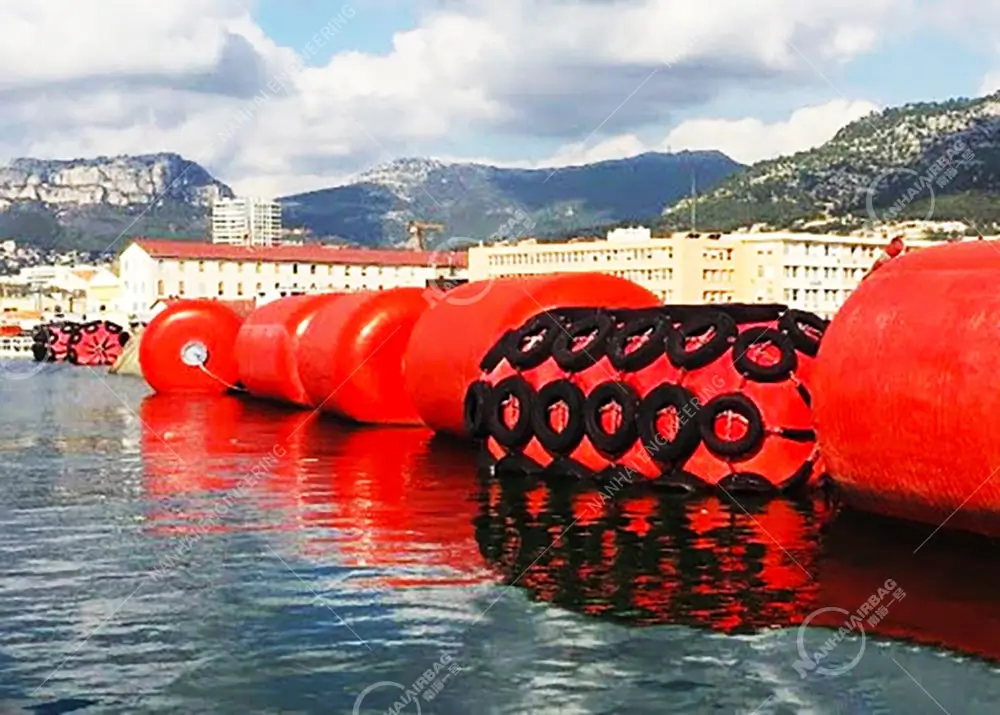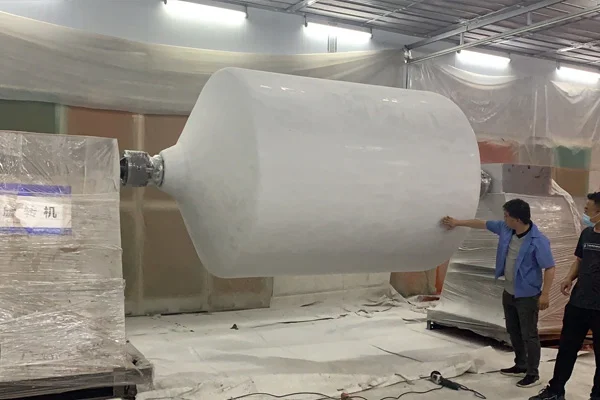Should I fully deflate the pneumatic fender?
08/05/2025Will a foam fender still work if it has cuts or dents?
08/08/2025How are foam filled fenders made?
Foam Filled Fender Manufacturing
1. Introduction
A foam filled fender is a marine buffer that protects ships and docks during berthing. It absorbs impact energy while keeping reaction force low. These fenders are unsinkable, durable, and require minimal maintenance.
NANHAI designs and builds foam filled fenders that offer safety and reliability. We aim to deliver fenders that stand up to tough marine environments and provide long service life.

2. Foam Filled Fenders Materials and Structure
- Foam core: We use closed-cell polyethylene (PE) or EVA foam strips or boards. These materials resist water and absorb energy effectively.
- Reinforcement layer: We wrap the foam core in nylon (cord or tire fabric) for strength and tear resistance.
- Outer elastomer skin: We spray a layer of polyurethane or polyurea over the reinforcement. This skin resists abrasion, UV, and salt.
- Optional chain/tire net or internal hardware: For larger fenders, we include chains or internal fittings to distribute load and allow rotation.
3. Foam Filled Fenders Manufacturing Process
3.1 Build the Foam Core
We place a metal mandrel (a long steel rod) in a fender building machine and wrap foam strips or heat-softened foam boards around it. We use heat (typically 110–130 °C) to soften and fuse the foam layers into a solid, seamless core.
3.2 Wrap Reinforcement Fabric
Next, we wrap dipped nylon cord fabric tightly around the foam core. This fabric layer boosts structural strength and holds the foam firmly in place.
3.3 Spray Elastomer Skin
We then spray polyurethane or polyurea elastomer onto the reinforced core while rotating it. During spraying, continuous nylon filaments wind around the fender, reinforcing the skin. This step produces a strong outer layer that resists wear and distributes stress.
3.4 Add End Fittings
Once the elastomer cures, we attach metal end fittings and mounting hardware. We often use chain or tire net systems so the fender can rotate and avoid stress concentration.
3.5 Final Curing and Testing
After assembly, the fender cures fully. We perform quality checks: foam density, skin thickness, compression tests, energy absorption, reaction force, and cyclic loading. We follow marine standards such as ASTM F2192 or PIANC.

4. Why This Method Works
- We avoid using adhesives in the foam core. By heat-laminating foam layers, we form one solid, unsinkable core. The core remains intact even if the outer skin is damaged.
- The filament-wound reinforcement aligns strength exactly where it’s needed. The fabric inside the skin helps the fender handle shear and impact without tearing.
- We tailor foam density (from around 30 kg/m³ to 140 kg/m³) to adjust energy absorption and reaction force for different vessel types.
5. Conclusion
NANHAI’s foam filled fenders combine smart design and proven manufacture. We build a strong foam core, add durable reinforcement, coat with tough elastomer, and install sturdy fittings. Every fender offers consistent performance and long durability.
Our method works well for ports, terminals, shipyards, and offshore applications. We design each fender to meet the needed size, energy capacity, and environmental conditions.
If you’d like, I can expand on equipment selection, automation, or eco-friendly material options. Just let me know!
